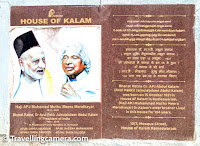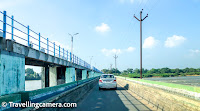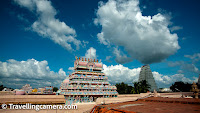While Sagar town in Madhya Pradesh may be a hidden gem in terms of its cultural and natural attractions, unfortunately, it's also known for its poor infrastructure and roads. For visitors coming to Sagar, it's important to be aware of the challenges they may face when traveling around the town.
One of the most significant issues in Sagar is the condition of its roads. Many of the roads in the town are poorly maintained, with potholes and uneven surfaces making it difficult to drive or even walk. This is particularly true in the rural areas surrounding Sagar, where many of the town's natural and cultural attractions are located.
In addition to poor road conditions, Sagar also has limited public transportation options. While there are some local buses and taxis available, they may not run regularly or be reliable. This can make it challenging for visitors to get around and see everything they want to see in the town.
Another issue with Sagar's infrastructure is the lack of public facilities. For example, public restrooms are scarce, and those that are available may not be well-maintained or sanitary. This can make it difficult for visitors to stay comfortable and healthy during their time in Sagar.
Despite these challenges, there are still ways to enjoy Sagar's natural and cultural attractions. Visitors can consider hiring a private car or driver to navigate the town's rough roads, or opt for a guided tour that includes transportation. It's also a good idea to come prepared with any necessary supplies, such as water and snacks, as facilities may be limited.
The lake is an important natural resource that provides numerous benefits to both people and the environment. Unfortunately, when a lake is poorly maintained, it can have negative impacts on both.
One of the most immediate impacts of a poorly maintained lake is on its aesthetic appeal. A lake that is filled with litter, algae blooms, and other debris can be an eyesore and detract from its natural beauty. This can discourage visitors and harm the local tourism industry, which may rely on the lake as a major attraction.
In addition to its visual impact, a poorly maintained lake can also have negative environmental consequences. For example, excessive algae growth can deplete oxygen levels in the water, which can harm fish and other aquatic life. This can have ripple effects throughout the ecosystem, impacting the entire food chain.
Poor maintenance of a lake can also impact its ability to provide important ecosystem services. For example, lakes help to regulate water flow and can help to prevent flooding in surrounding areas. They can also provide important habitat for wildlife and serve as a source of drinking water for nearby communities. When a lake is poorly maintained, these services can be compromised, causing negative impacts on the environment and people alike.
It's important to note that maintaining a lake is a complex and ongoing process that requires the cooperation of many stakeholders, including government agencies, local communities, and lake users. This may involve implementing best management practices for agriculture and urban development, reducing nutrient inputs from sewage and stormwater runoff, and implementing policies to prevent or reduce litter and other forms of pollution.
Sagar town in Madhya Pradesh is in need of attention from the government to improve its infrastructure. By investing in road maintenance, public transportation, public facilities, and tourism infrastructure, the government can make Sagar a more livable and attractive town for both locals and visitors alike.

 Delhi to Bhopal Road Trip - The very first day of our 14 days long trip through east coast of India || Noida to Rameshwaram
Delhi to Bhopal Road Trip - The very first day of our 14 days long trip through east coast of India || Noida to Rameshwaram The Majestic Brihadeeshwara Temple: A Glimpse into the Architectural Brilliance of Thanjavur in Tamilnadu, India
The Majestic Brihadeeshwara Temple: A Glimpse into the Architectural Brilliance of Thanjavur in Tamilnadu, India
 Unlocking the Treasures of Saraswati Mahal Library in Thanjavur, Tamilnadu || Exploring India's oldest and most fascinating collection of manuscripts
Unlocking the Treasures of Saraswati Mahal Library in Thanjavur, Tamilnadu || Exploring India's oldest and most fascinating collection of manuscripts
 Exploring the Legacy of Dr. APJ Abdul Kalam at House of Kalam: A Journey through His Life and Achievements
Exploring the Legacy of Dr. APJ Abdul Kalam at House of Kalam: A Journey through His Life and Achievements
 Hotel Gokulam and Golden Minerva Coffee Cafe in Madanapalle, Andhra Pradesh, India || The town that provided us great food and a comfortable night stay
Hotel Gokulam and Golden Minerva Coffee Cafe in Madanapalle, Andhra Pradesh, India || The town that provided us great food and a comfortable night stay
 Exploring the Architectural Marvels and Historical Significance of Arulmigu Ramanathaswamy Temple in Rameshwaram, Tamilnadu : A Spiritual Journey Through Time
Exploring the Architectural Marvels and Historical Significance of Arulmigu Ramanathaswamy Temple in Rameshwaram, Tamilnadu : A Spiritual Journey Through Time
 Embracing the Serenity of Sunrise: Exploring Dhanushkodi in the Early Hours of the Morning | Tamilnadu Diaries
Embracing the Serenity of Sunrise: Exploring Dhanushkodi in the Early Hours of the Morning | Tamilnadu Diaries





%20to%20see%20the%20Danish%20fort%20in%20Tamilnadu%20state%20of%20India-3.jpg)














.jpg)
Comments